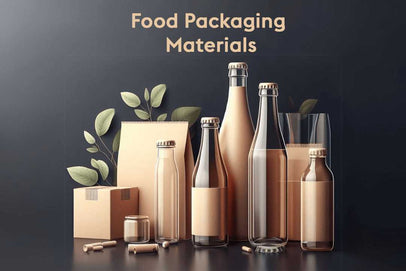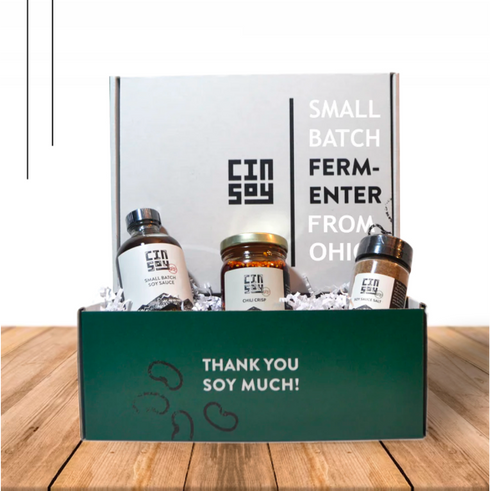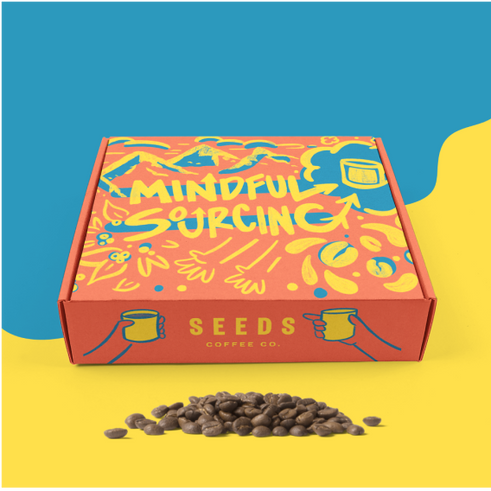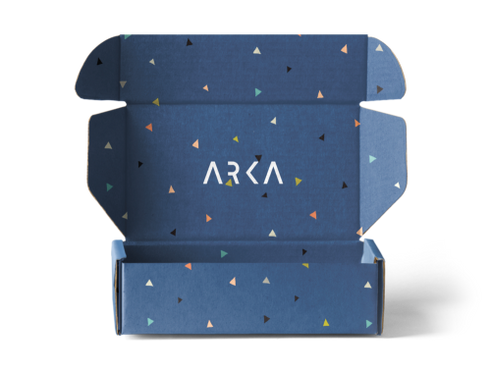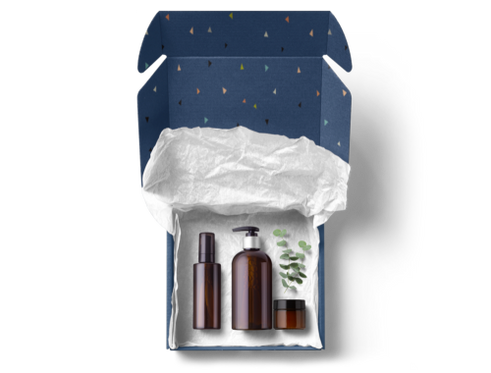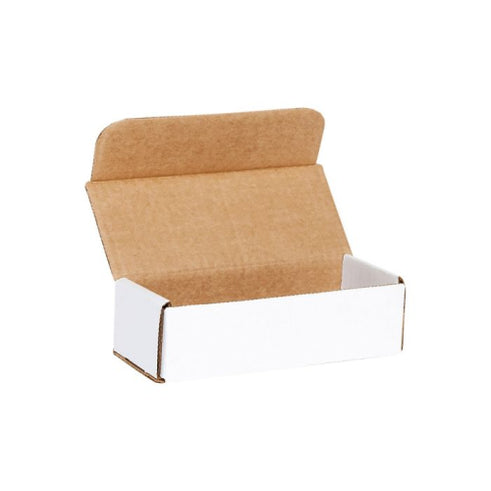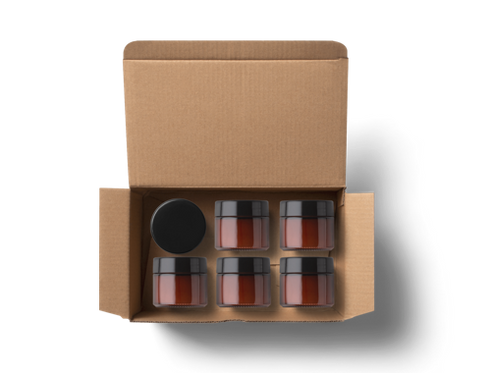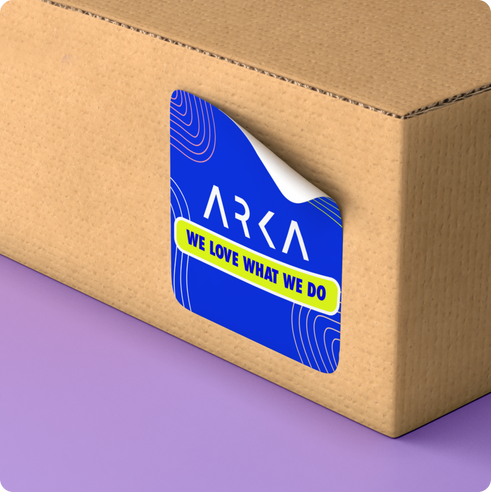Packaging 101: The Complete Guide
- Packaging 101
- Types of Packaging
- Aseptic Packaging
- Blister Packaging
- Biodegradable Packaging
- Bulk Packaging
- Carbon Neutral Packaging
- Circular Packaging
- Clamshell Packaging
- Compostable Packaging
- Cornstarch Packaging
- Corrugated Packaging
- Discreet Packaging
- Ecommerce Packaging
- Flexible Packaging
- Frustration Free Packaging
- Retail Packaging
- Secondary Packaging
- Smart Packaging
- Sustainable Packaging
- What is a PR Package?
- What is a Poly Mailer?
- Packaging Design Ideas
- AI Packaging Design
- Bakery Packaging Ideas
- Bath Bomb Packaging Ideas
- Bath Salt Packaging Ideas
- Body Butter Packaging Ideas
- Body Oil Packaging Ideas
- Body Scrub Packaging Ideas
- Brownie Packaging Ideas
- Cake Packaging Ideas
- Cake Pop Packaging Ideas
- Candle Packaging Ideas
- Candy Packaging Ideas
- Canva Packaging Design
- Chocolate Packaging Ideas
- Cinnamon Roll Packaging Ideas
- Clothing Packaging Ideas
- Coaster Packaging Ideas
- Coffee Bag Design Ideas
- Cookie Packaging Ideas
- Cosmetics Packaging Design
- Cotton Candy Packaging Ideas
- Cupcake Packaging Ideas
- DIY Packaging Ideas
- Dog Treat Packaging Ideas
- Food Packaging Ideas
- Empanada Packaging Ideas
- Etsy Packaging Ideas
- French Fries Packaging Ideas
- Frozen Food Packaging Ideas
- Hair Extension Packaging Ideas
- Handbag Packaging Ideas
- Jewelry Packaging Ideas
- Keychain Packaging Ideas
- Lash Packaging Ideas
- Lip Gloss Packaging Ideas
- Macaron Packaging Ideas
- Minimalist Packaging Ideas
- Mug Packaging Ideas
- New Employee Welcome Kit Ideas
- Packaging Colors
- Packaging Inserts Ideas
- Packaging Logo Design
- Packaging Typography
- Perfume Box Design Ideas
- Pizza Box Design Ideas
- Popcorn Packaging Ideas
- Scarf Packaging Ideas
- Skincare Packaging Design Ideas
- Soap Packaging Ideas
- Sock Packaging Ideas
- Sticker Packaging Ideas
- Sunglass Packaging Ideas
- Sustainable Packaging Ideas
- Tea Packaging Ideas
- Wax Melt Packaging Ideas
- Weed Packaging Ideas
- T-Shirt Packaging Ideas
- Wine Packaging Design Ideas
- What is a Packaging Engineer?
- Types of Packaging Materials
- Chipboard vs Cardboard
- Compostable Packaging Materials
- Alternatives to Plastic Packaging
- Edible Packaging Materials
- Food Packaging Materials
- Are Poly Mailers Recyclable?
- How to Recycle Cardboard Boxes
- How to Recycle Packaging Materials
- Medical Device Packaging Materials
- Mono Material Packaging
- Pharmaceutical Packaging Materials
- Plastic Food Packaging
- Protective Packaging Materials
- Reusing Packaging Materials
- Types of Packaging Foam
- Void Fill Packaging
- What is Chipboard?
- What is Kraft Paper?
- Offset vs Digital Printing
- RGB vs CMYK Printing
- Screen Printing vs Digital Printing
- Screen Printing vs Sublimation
- What is a Dieline in Packaging?
- What is Die Cutting?
- What is Digital Printing?
- What is Flexographic Printing?
- What is Glassine Paper?
- What is Offset Printing?
- What is Spot UV Printing?
- Why is 300 DPI Good for Printing?
- How to Estimate Shipping Costs
- How to Pack Glass for Shipping
- How to Mail a Bubble Mailer
- How to Make a Shipping Label
- How To Measure Box Dimensions and Sizes
- How to Ship Alcohol
- How to Ship Artwork
- How to Ship Books
- How to Ship a Cake
- How to Ship Candles
- How to Ship Chocolate
- How to Ship Clothes
- How to Ship Cookies
- How to Ship Food
- How to Ship a Hat
- How to Ship Jewelry
- How to Ship a Laptop
- How to Ship Perfume
- How to Ship a PC
- How to Ship Perishable Food
- How to Ship Plants
- How to Ship Shoes
- How to Ship Vinyl Records
- Packaging Symbols
- Shipping Large Items
- What is a Delivery Exception?
- What is Shipping Insurance?
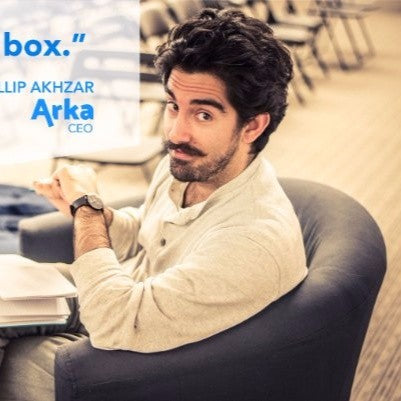
Discover Phillip Akhzar’s journey, the Founder and CEO of Arka, bringing 16 years of expertise in packaging and supply chain logistics. Read more on Arka.
The Importance of Food Packaging Materials
When it comes to packaging our food, the materials used play a crucial role in preserving its freshness, ensuring safety, and providing essential information to consumers. Food packaging materials, often overlooked, are vital for several reasons.
One of the primary purposes of food packaging materials is to preserve the freshness and quality of the food products they contain; Proper packaging prevents exposure to air, light, and moisture, which can lead to spoilage and degradation. By using suitable packaging materials for food, manufacturers can extend the shelf life of products reducing food wastage and ensuring that consumers enjoy fresh produce.
Food safety is paramount, and packaging materials for food are instrumental in maintaining it. Food safe packaging materials are designed to prevent contamination and protect products from harmful bacteria and pathogens. Rigorous standards ensure that these packaging materials do not leach harmful substances into the food, safeguarding consumers' health. Understanding the types of materials used for food packaging is essential as it directly impacts the safety of our products.
Food packaging materials serve as carriers of valuable information for consumers; Labels, nutritional facts, expiration dates, and handling instructions are crucial details provided through packaging. This information empowers consumers to make informed choices about the products they purchase and consume; Understanding what these labels mean helps individuals select products that align with their dietary needs and preferences.
11 Common Types of Food Packaging Materials
Food packaging materials play a crucial role in preserving the freshness and quality of our favorite snacks and meals; From the local grocery store to online deliveries, various materials are used to safeguard our food products.
Plastic
Plastic is one of the most widely used food packaging materials due to its versatility and affordability; several types of plastic are used for packaging, including Polyethylene, Polyvinyl Chloride, and Shrink Film.
Benefits
• Lightweight and durable.
• Resistant to moisture and chemicals.
• Cost-effective and easily customizable.
Challenges
• Not biodegradable, leading to environmental concerns.
• Some types can release harmful chemicals when exposed to heat or sunlight.

Glass
Glass packaging is renowned for its premium look and feel, making it ideal for various food products like sauces, jams, and beverages.
Benefits
• Completely recyclable and does not leach harmful chemicals into the food.
• Provides excellent protection against external odors and flavors.
• Retains the taste and quality of the food products.
Challenges
• Fragile and prone to breakage.
• Heavier than plastic, increasing transportation costs.

Metal
Metal packaging includes materials like tin, aluminum foil, and steel, offering robust protection for canned goods and beverages.
Benefits
• Highly durable and resistant to impact and tampering.
• Provides an excellent barrier against light, oxygen, and moisture.
• Easily recyclable, reducing environmental impact.
Challenges
• It can be heavy, affecting transportation costs
• Prone to corrosion, especially in acidic environments

Wood
Wooden packaging, although less common today, is still used for specialty products and artisanal foods.
Benefits
• Biodegradable and eco-friendly.
• Provides a rustic and natural aesthetic appeal.
• Suitable for products requiring ventilation, like certain fruits and vegetables.
Challenges
• Susceptible to moisture and pests requiring proper treatment.
• Limited in terms of mass production due to manual crafting requirements.

Paper and cardboard
Paper and cardboard packaging have been widely used in the food industry due to their versatility and eco-friendly nature.
Benefits
• Both paper and cardboard are biodegradable and recyclable, significantly reducing their environmental impact.
• They are lightweight and cost-effective, making them ideal for various products.
• They provide a canvas for attractive branding and product information.
Challenges
• Paper and cardboard can be compromised by moisture, potentially affecting both the packaging and the product within.
• They offer limited protection against gases and odors that can affect certain items' shelf life.

Flexible Packaging
Flexible packaging encompasses materials such as plastic films, foil, and paper, which are easily shaped and sealed.
Benefits
• Flexible packaging accommodates a wide range of product shapes and sizes.
• Its lightweight nature reduces transportation costs and environmental impact.
• Flexible packaging excels in providing protection against moisture, air and light.
Challenges
• Many flexible packaging materials are not biodegradable, contributing to environmental pollution.
• Some types of flexible packaging may contain harmful chemicals posing hazards if not disposed of properly.

Clamshell Packaging
Clamshell packaging, often made from plastic, is widely used for various food products; These are hinged containers encase food securely, ensuring freshness and convenience.
Benefits
• Allows customers to see the product clearly.
• Protects delicate items from damage during transit.
• Easy to open and reseal.
Challenges
• Non-biodegradable, leading to pollution.
• Takes up more space in landfills.

Ceramics
Ceramic packaging has been used for centuries, especially for items like sauces and condiments; These materials are known for their durability and aesthetic appeal.
Benefits
• Resistant to wear and tear, ensuring long-lasting use.
• Enhances the presentation of food items.
• Maintains the temperature of hot or cold foods.
Challenges
• Prone to breakage if dropped or mishandled.
• Heavier compared to other materials increasing shipping costs.

Plant-Based Materials
Plant-based materials are a sustainable alternative to traditional plastics derived from renewable sources like cornstarch, sugarcane, or potato starch. Cornstarch packaging is one of the most eco-friendly options commonly used for food.
Benefits
• Breaks down naturally, reducing environmental impact.
• Derived from renewable resources reducing dependence on fossil fuels.
• Can be molded into various shapes for different food items.
Challenges
• May not be as sturdy as traditional plastics.
• Production costs can be higher than conventional plastics.

Composite Materials
Composite materials are a blend of different substances designed to harness the strengths of each component; They are widely used in food packaging due to their versatility and durability.
Benefits
• They can be tailored to meet specific requirements making them suitable for various food products.
• They provide excellent protection against moisture, oxygen, and light, ensuring longer shelf life.
• Graphics and branding can be easily applied, enhancing product visibility.
Challenges
• Due to their mixed composition, recycling composite materials can be challenging.
• Depending on their composition, they may not be as eco-friendly as other options.

Mylar Bags
Mylar bags made from a type of polyester resin, are commonly used for packaging various food items; They are known for their strength and ability to create a barrier against light, moisture and oxygen.
Benefits
• They provide an effective barrier against light, moisture and oxygen keeping the food fresh.
• They extend the shelf life of products reducing food waste.
• They are often reusable which can be eco-friendly when handled responsibly.
Challenges
• They are not biodegradable and can contribute to environmental issues if not properly disposed.
• These bags can be more expensive than some other packaging options.

Specialized Food Packaging Materials
Specialized food packaging is essential in today's food industry; It guarantees that products reach customers in peak condition and supports eco-friendly practices. This is achieved through options like biodegradable food packaging materials and advanced methods like vacuum sealing and modified atmosphere packaging. These approaches are instrumental in maintaining product freshness and quality while reducing their environmental footprint.
Biodegradable Food Packaging Materials
In the realm of eco-conscious choices, biodegradable packaging materials stand tall; Crafted from organic materials, these packages naturally decompose, curbing environmental harm. They align seamlessly with the growing demand for sustainable packaging, reflecting our planet-friendly ideals. As we embrace biodegradable food packaging materials, we take a significant step towards reducing our carbon footprint.

Vacuum and Modified Atmosphere Packaging
Vacuum packaging, a timeless method, sucks out the air before sealing, thwarting microorganism growth and extending perishables' shelf life. By eliminating oxygen, it ensures contents remain fresh and safe, especially for delicate items reaching our tables at their prime.
Modified Atmosphere Packaging (MAP)
This groundbreaking technique tweaks the package's internal atmosphere, enhancing product freshness. By adjusting oxygen, carbon dioxide and nitrogen levels, MAP slows oxidation, preserving food's natural texture and flavor. Quality maintenance meets reduced food waste, aligning perfectly with our sustainability objectives.
Active Packaging
These packages interact with food actively, enhancing its shelf life. Antimicrobial agents combat bacterial growth, while oxygen scavengers extend freshness. This approach ensures our favorite products stay delectable and safe, reducing waste and maximizing satisfaction.
3 Tips for Choosing the Right Food Packaging Material
When it comes to choosing the right food packaging materials, several factors must be considered to ensure the safety of the food products, environmental responsibility, and compliance with regulations. Here are three essential tips to help you make the right choice:
Consider the Food Type
• Each type of food requires special packaging types; Delicate fruits and veggies need materials that allow air circulation to prevent spoilage. Dry goods like grains need packaging that protects against moisture.
• Dairy and meats need strong barriers against oxygen and light; Materials such as glass, aluminum, or specific high-barrier plastics work well for these items.
• Choose packaging that fits your food's needs; Custom shapes and sizes can make products look better and storage more efficient.
Environmental Impact
• Prioritize eco-friendly packaging materials for food that decompose naturally, minimizing environmental impact. Sustainable packaging options like compostable plastics and bio-based materials rapidly break down without leaving harmful residues.
• Give preference to easily recyclable materials; Verify recycling codes on plastic packaging to ensure post-use recycling possibilities. This practice reduces the demand for new raw materials and minimizes waste.
• Opt for packaging materials sourced from sustainable origins; Seek out certifications like FSC (Forest Stewardship Council) for paper-based packaging, which indicates responsible forest management practices.
Safety and Regulations
• Ensure that packaging materials meet local food safety rules; Standards prevent harmful substances from contaminating food, ensuring consumer safety.
• Beware of hazards like BPA in plastics; Opt for BPA-free materials to prevent food contamination.
• Label packages clearly with expiration dates and storage instructions; Proper labeling ensures safety and regulatory adherence.
Final Thoughts
In our quest for fresh and safe food, diverse food packaging materials, from classic glass to modern vacuum-sealed pouches, play a vital role; These materials cater to various needs offering options for convenience, eco-friendliness, and specialized preservation.
At Arka
